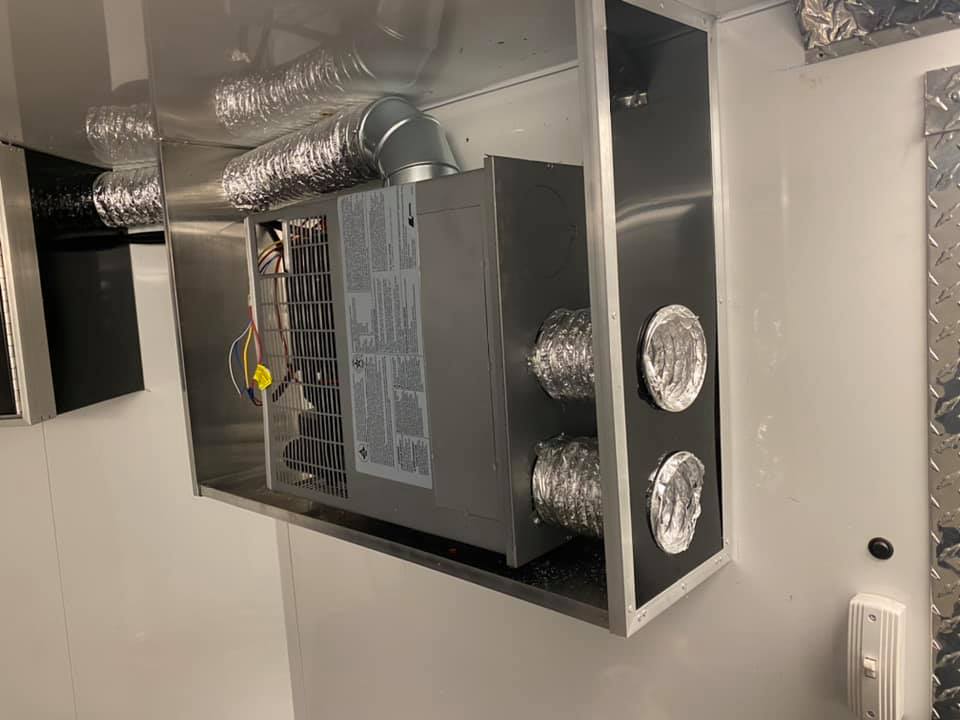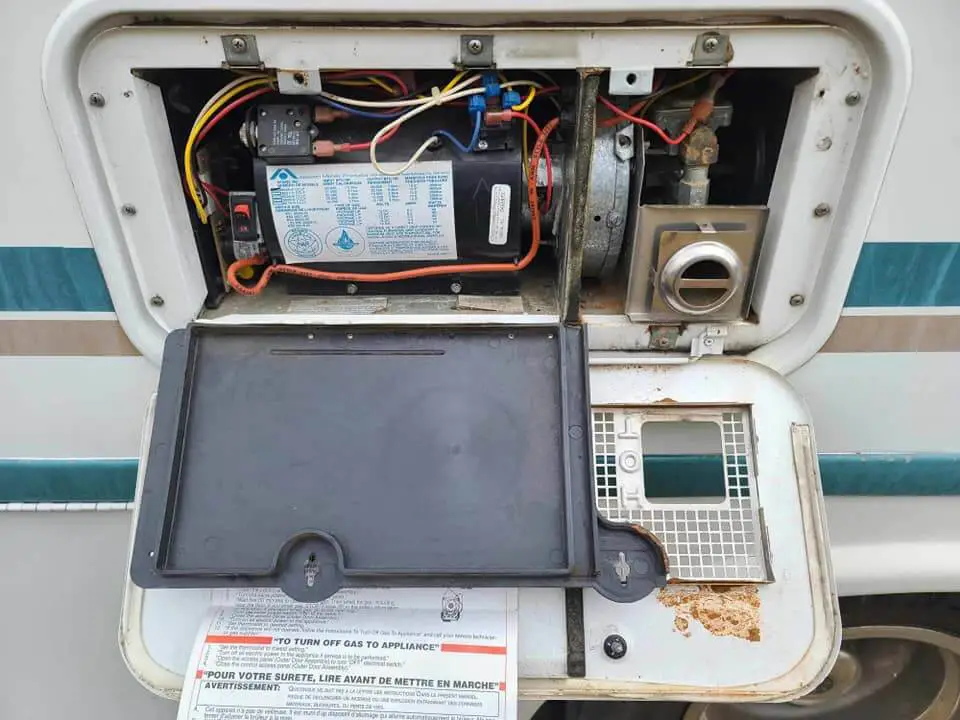If you own an RV, you know how crucial a properly functioning furnace is to keep you warm and cozy during your travels. However, encountering a problem where your RV furnace clicks but fails to light can be frustrating and inconvenient. In this article, we will explore the common causes behind this issue and provide you with troubleshooting steps and DIY fixes to get your furnace back up and running.
Understanding the RV Furnace
Before we dive into the causes and fixes, it’s important to understand how an RV furnace works. An RV furnace is typically a propane-powered forced-air system that heats the interior of your RV. When you turn on your furnace, the thermostat signals the furnace to turn on. The furnace then goes through a sequence of steps to ignite the propane and heat the RV.
Causes of RV Furnace Clicking but Not Lighting

Lack of Propane
One of the most common causes of an RV furnace clicking but not lighting is a lack of propane. Propane is the fuel that powers the furnace, and if the propane tank is empty or low, the furnace won’t ignite. Check your propane tank to make sure it’s not empty, and if it’s low, refill it.
Dirty Burner or Igniter
Another common cause of an RV furnace clicking but not lighting is a dirty burner or igniter. Over time, the burner and igniter can become dirty, which can prevent the furnace from igniting. To fix this issue, you’ll need to clean the burner and igniter. Refer to your RV owner’s manual for instructions on how to do this.
Faulty Thermocouple
The thermocouple is a safety device that shuts off the propane if the flame goes out. If the thermocouple is faulty, it can prevent the furnace from igniting. To fix this issue, you’ll need to replace the thermocouple. Refer to your RV owner’s manual for instructions on how to do this.
Blown Fuse
If the furnace clicks but doesn’t light, it’s possible that a fuse has blown. Check the furnace’s circuit breaker or fuse box to see if a fuse has blown. If it has, replace the fuse with a new one.
Bad Control Board
Finally, a bad control board can cause an RV furnace to click but not light. The control board is responsible for controlling the furnace’s ignition sequence, and if it’s faulty, it can prevent the furnace from igniting. To fix this issue, you’ll need to replace the control board.
Fixes for RV Furnace Clicking but Not Lighting
Check Propane Supply
If your RV furnace is clicking but not lighting, the first thing you should do is check your propane supply. Make sure the propane tank is not empty and, if it’s low, refill it. Also, check the propane regulator to make sure it’s not faulty.
Clean Burner and Igniter
If your RV furnace has a dirty burner or igniter, it may not ignite properly. To fix this issue, you’ll need to clean the burner and igniter. Refer to your RV owner’s manual for instructions on how to do this.
Replace the Thermocouple
If the thermocouple is faulty, it will need to be replaced. Refer to your RV owner’s manual for instructions on how to do this. Once the thermocouple has been replaced, your furnace should ignite properly.
Replace Blown Fuse
If a fuse has blown, you’ll need to replace it with a new one. Check the furnace’s circuit breaker or fuse box to see if a fuse has blown. If it has, replace the fuse with a new one.
Replace Control Board
If the control board is faulty, it will need to be replaced
. This is a more advanced repair, and if you’re not comfortable doing it yourself, it’s best to contact a professional RV technician.
DIY Fixes and Maintenance Tips

In addition to troubleshooting, performing some DIY fixes and regular maintenance can help prevent the clicking issue and keep your RV furnace in optimal condition. Here are a few tips:
- Cleaning the Furnace Components: Regularly clean the furnace components, including the burner assembly, igniter, and flame sensor, to remove any dirt, debris, or rust. This ensures proper functioning and ignition.
- Replacing Faulty Parts: If you discover any damaged or worn-out components during troubleshooting or maintenance, replace them promptly. This includes the igniter, electrode, flame sensor, or blower motor, if necessary.
- Regular Furnace Maintenance Practices: Follow the manufacturer’s recommendations for routine maintenance, such as lubricating moving parts, inspecting electrical connections, and checking for gas leaks. Regular maintenance can help identify and prevent potential issues before they escalate.
When to Seek Professional Help
While many clicking issues can be resolved through troubleshooting and DIY fixes, some problems may require professional expertise. Consider seeking professional help in the following situations:
A. Complex issues beyond DIY repair:
There are certain situations where RV furnace problems may go beyond what you can handle as a do-it-yourself (DIY) project. If you encounter complex issues with your RV furnace that exceed your knowledge, skills, or available resources, it’s advisable to seek professional help. These complex issues may include major mechanical failures, electrical problems, or issues with specialized components.
Attempting to fix complex problems without the necessary expertise can potentially worsen the situation or even cause safety hazards. It’s crucial to recognize your limitations and know when it’s time to involve a professional.
B. Importance of professional expertise:
Professional RV furnace technicians possess the necessary knowledge, training, and experience to diagnose and repair complex issues effectively. They are familiar with the various furnace models, their components, and troubleshooting techniques specific to RV heating systems. Their expertise ensures that the repair work is done correctly and reduces the risk of further damage.
Professional technicians also have access to specialized tools and equipment that may be required for diagnosing and fixing complex furnace problems. Their expertise allows them to identify the root cause of the issue and provide appropriate solutions, ensuring the safe and efficient functioning of your RV furnace.
C. Contacting an RV furnace technician:
When you encounter complex issues with your RV furnace, it’s recommended to contact a qualified RV furnace technician. Here are some steps you can take to find a reputable professional:
- Research: Look for certified RV furnace technicians or HVAC (Heating, Ventilation, and Air Conditioning) specialists who have experience working with RV heating systems. You can check online directories, ask for recommendations from fellow RV owners, or contact local RV service centers for referrals.
- Verify credentials: Ensure that the technician you plan to hire is properly licensed, insured, and certified. These credentials indicate that they have met the necessary requirements and possess the required expertise to handle RV furnace repairs.
- Seek estimates: Contact multiple technicians and request estimates for the repair work. This allows you to compare prices and services offered. However, keep in mind that the cheapest option may not always be the best choice. Consider the technician’s reputation, experience, and customer reviews in addition to the cost.
- Schedule an appointment: Once you have chosen a technician, schedule an appointment to have your RV furnace inspected and repaired. Make sure to provide them with detailed information about the problem you’re experiencing and any relevant details about your RV’s furnace system.
Remember, timely and professional intervention can help you avoid further damage and ensure the safe operation of your RV furnace.
Conclusion
Dealing with an RV furnace that clicks but doesn’t light can be a frustrating experience, especially when you’re out on the road. However, by understanding the possible causes and following the appropriate fixes, you can get your furnace up and running again. Remember to check your propane supply, clean the burner and igniter, replace the thermocouple if necessary, replace blown fuses, and consider replacing the control board if all else fails. By taking these steps, you’ll increase the chances of having a warm and comfortable RV.
FAQs (Frequently Asked Questions)
1. Why is my RV furnace clicking but not igniting?
If your RV furnace is clicking but not igniting, it could be due to a lack of propane, a dirty burner or igniter, a faulty thermocouple, a blown fuse, or a bad control board.
2. How do I check if my propane tank is empty?
To check if your propane tank is empty, pour warm water down the side of the tank and feel for a cold spot. If the tank feels cold, it likely contains propane. Alternatively, you can use a propane tank gauge or consult a professional.
3. Can I clean the burner and ignite it myself?
Yes, you can clean the burner and ignite it yourself. Refer to your RV owner’s manual for instructions on how to do this properly.
4. Can a blown fuse cause the furnace to click but not light?
Yes, a blown fuse can prevent the furnace from lighting. Check the furnace’s circuit breaker or fuse box to see if a fuse has blown and replace it if necessary.
5. How much does it cost to replace a control board in an RV furnace?
The cost of replacing a control board in an RV furnace can vary depending on the make and model of your RV. It’s best to contact a professional RV technician for an accurate cost estimate.

Hi I’m Joiel Borid Creators of RV Outsider. Wild Life’s first camping was started when I’m 8 years old, at the Home Front Yard. Moto of RV Outsider shares my experience, expertise, and knowledge that I learned, and apprises about my next journey. So stay tuned with RV Outsider.
